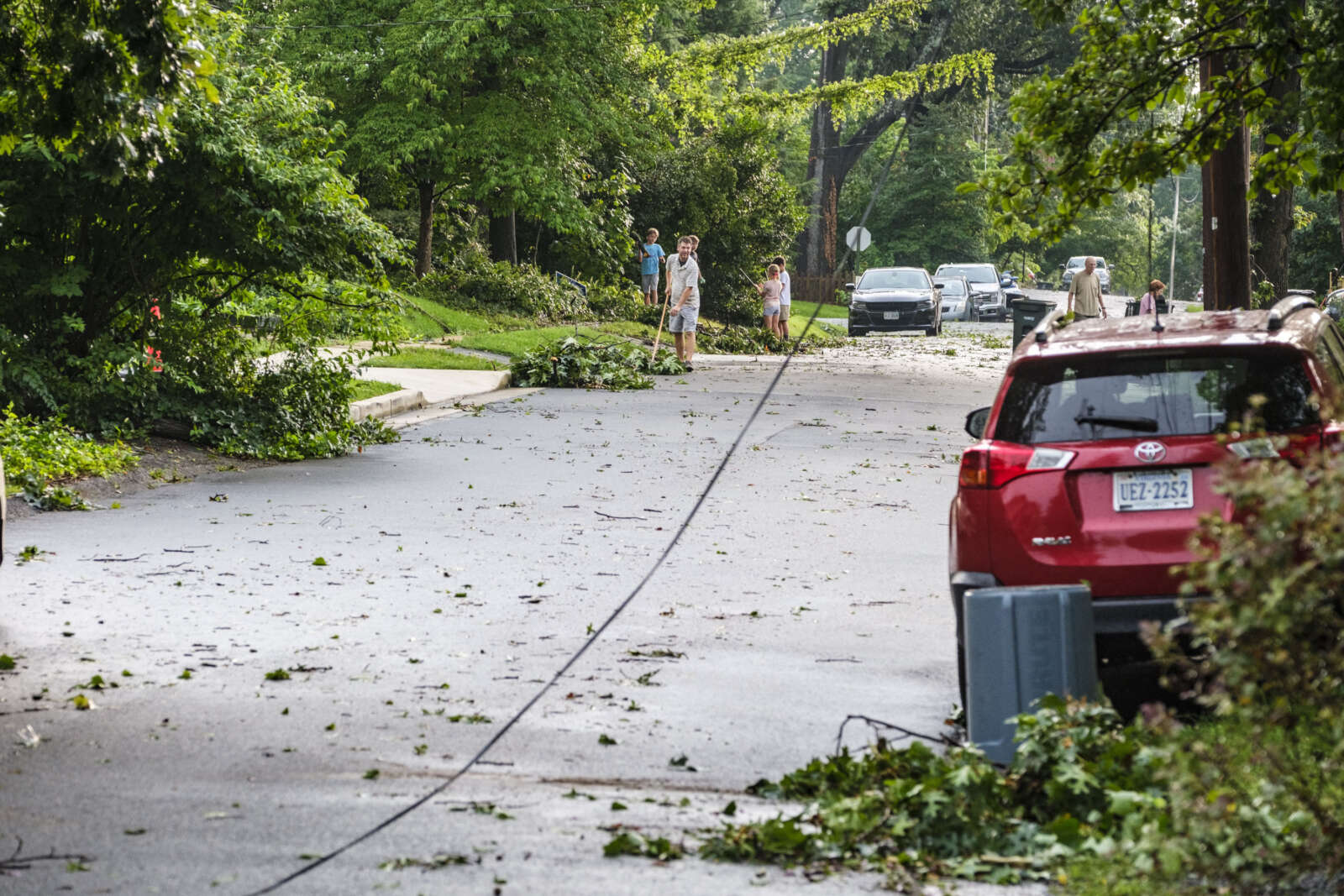
(Updated on 8/18/23) After a late July tempest plunged roughly 35,000 Arlington residents into darkness, ARLnow posed a pressing question to Virginia’s largest electric utility: Why not move all power lines underground?
The short answer is red tape and price.
Local elected officials have been interested in burying power lines since the 1980s, as doing so can reduce power outages and restoration times after storm-induced outages. The trade-offs, however, include cost, customer buy-in and longer repair times.
Historically, cost has been the biggest deterrent. Virginia, Dominion and Arlington County have balked at spearheading efforts at their respective levels, citing costs. This has left the utility company and Arlington County to piece together a patchwork approach prioritizing vulnerable lines, willing property owners and deep-pocketed developers.
Whenever a storm blows through, however, causing power disruptions and requiring maintenance work, the question of a broader effort resurfaces.
Feels like we should maybe consider the possibility of planning how to under ground all of these lines 👀😳 pic.twitter.com/n8FS38DHO4
— Maureen Coffey (she/her) (@maureencoffeyva) July 30, 2023
In an interview, Dominion spokeswoman Peggy Fox underscored two obstacles.
First, the utility company needs permission from property owners, also known as an easement, to access their land. People do not always grant that permission because, Fox said, “not everybody wants the construction that goes along with it.”
“We can’t just come in and do what we want. These are people’s properties, and we want to work with them,” she said in a phone interview.
Second, burying power lines would cost billions of dollars.
After Hurricane Isabel devastated Virginia’s electrical grid in 2003, the Virginia General Assembly tasked the State Corporation Commission — which regulates utilities in Virginia — with studying the feasibility of relocating the state’s overhead distribution power lines underground.
The study says the project aimed to decrease weather-related utility interruptions, reduce maintenance costs and lessen “visual pollution.”
Elected officials scrapped the project after learning it could cost around $83 billion, to be borne by utility customers via higher taxes or rates, and could cause “significant disruptions.”
“The potential benefits, both to the utilities and to the economy, resulting from the elimination of tree trimming maintenance, vehicle accidents, post-storm restoration, and lost sales during outages, do not appear to be sufficient to offset the initial construction costs associated with a comprehensive program to relocate the currently existing overhead utility distribution lines to underground,” the report stated.
Fox said she cannot “pinpoint” how much it would cost to underground all overhead power lines in Arlington, let alone the state. Adjusted for inflation, $83 billion would be roughly $130 billion today.
Arlington County has also shied away from taking on this work over costs. In 2015, then-Arlington County Board Chair Mary Hynes said a local effort to bury electrical and telecommunication wires would cost billions of dollars the county did not have, the Sun Gazette reported at the time.
Nevertheless, Dominion and the county have taken steps to move underground several miles of power lines in Arlington.
In 2014, Dominion embarked on its Strategic Underground Plan (SUP) to bury 4,000 miles of vulnerable overhead lines throughout the state. So far, it has buried around 1,907 miles — nearly the halfway point.

